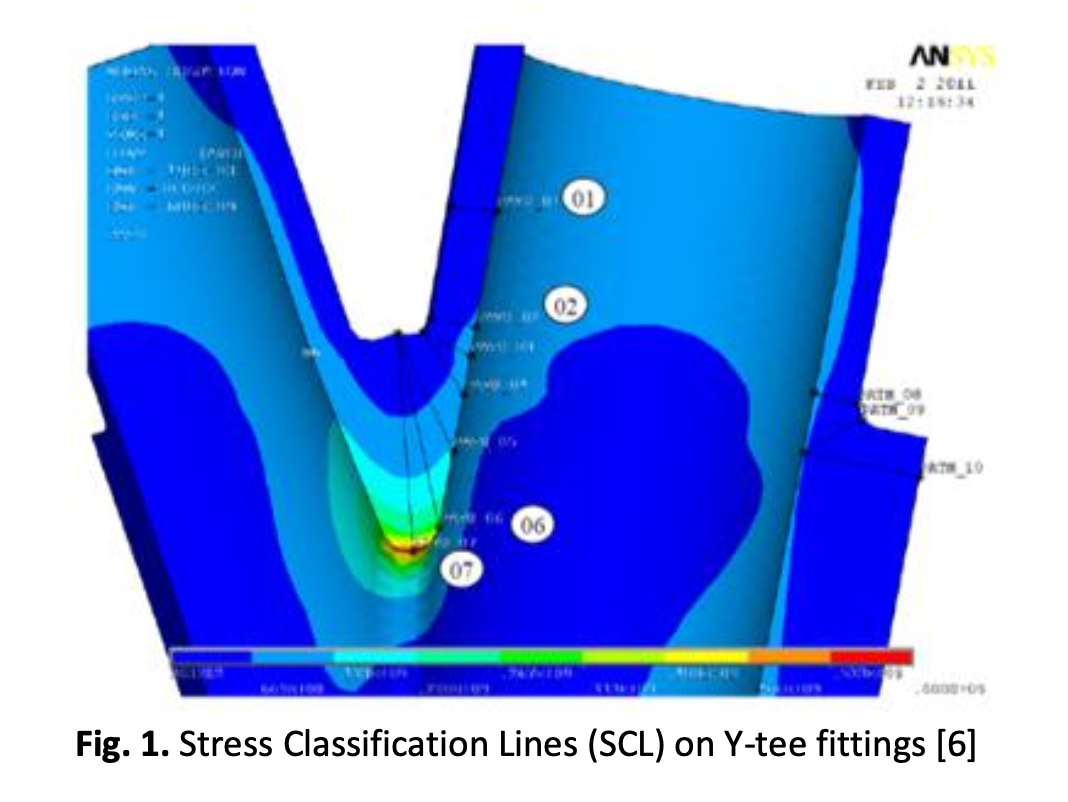Stress Classification Lines for Non-Standard Y-Tee Design in Piping System
DOI:
https://doi.org/10.37934/araset.33.1.367383Keywords:
Stress Intensity Factor, Finite Element Analysis, Y-tee, pipe failure analysisAbstract
All processes fluids in the oil and gas industry are generally transferred from one point to another via complex piping networks. The process temperature and the pressure of the fluids may vary between -21 °C to 816 °C and from atmospheric, 1.013 barg to 431 barg, respectively. Under these conditions, the entire piping networks are exposed to thermal expansion and contraction resulting in mechanical bending, potentially causing mechanical failures. The most common pipe fitting used in piping networks to divide the fluid flow into two different directions would be a standard equal tee which was designed in accordance with ASME B16.9. The equal tee, however, has distinctive flexibility characteristics compared to the pipe, which is well defined in ASME B31.3. These flexibility characteristics generate a stress intensification factor (SIF) through bending moment equations for beam-type element analysis for standard equal tee components. However, due to the limitation of SIF and flexibility characteristics for the non-standard pipe fittings, the stress evaluation could not be done using beam-type element analysis. When using finite element method (FEM) analysis, generally equivalent stresses (Von Mises or Tresca) or principal stresses would be evaluated depending on the stress categorization as explained in ASME codes and standards. In this paper, a stress evaluation method for non-standard Y-tee was developed and demonstrated against ASME VIII Div. 2 Part 5 requirement. The developed SCLs line for the non-standard Y-tee fittings provides the guides for stress assessment against design stress allowable. An optimum design for non-standard Y-tee is proposed at 45° and 60° crotch radii which resulted in lower stress value at SCL lines, hence improving the structural integrity.
Downloads





























